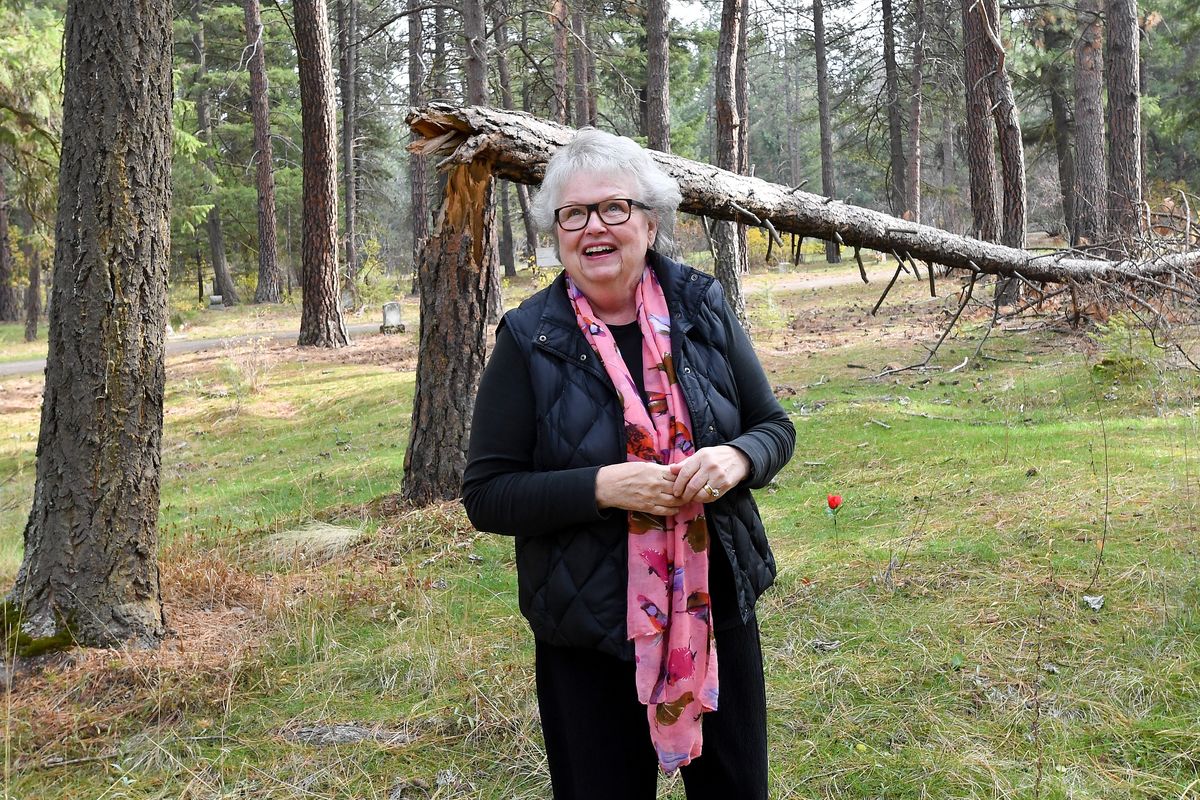Pandemic project: Caring for untended graves at Greenwood Memorial Terrace

Bright spots of color peep out among crumbling gravestones covered with pine needles, twigs and brush. The artificial red roses mark Nancy Larson’s pandemic project.
In May, she began visiting the unendowed portion of Greenwood Memorial Terrace. The city’s first modern burial site was founded in 1888 when A.M. Cannon and other prominent businessmen purchased and donated the land in west Spokane.
Larson’s mother had taken her there often, and referred to the spot as “potter’s field.” Actually, anyone can choose to be buried in the area, but it isn’t groomed by cemetery staff.
“The first time I went I was just there to see what I could do to recognize a few of the bare gravesites without changing the natural environment,” recalled Larson.
She decided to bring hens and chicks plants from her garden, some soil and water, and plant them at a few untended graves. The plants are found naturally in the area and are sturdy enough to survive Spokane winters.
Her original plan was to visit the site once a week, choose a grave or two, clean the area, and plant of few hens and chicks. Our scorching summer changed that because the plants needed extra water to nurture them.
“I ended up going three times a week, taking 5-gallon buckets of dirt and gallons of water,” Larson said.
She walked with care among the tumbled stones, stepping around sunken graves, rotted tree holes and lots of fallen branches.
“I’m not sure why I selected the ones that I did,” she said. “I noticed there were lots of babies and young children who passed away in 1909 and 1910.”
Sometimes the location drew her, other times it was the brief story etched in stone.
“Betty Lou Carlson- age 25 days.”
“Baby Wing- 1908.”
“Theodore B. Hafstad, Nov. 9, 1884 – April 4, 1908, Jeg lever og skulle leve.” The phrase appears to be Norwegian and loosely translated means, “I live and should live.”
As the number of graves she tended grew, Larson placed red artificial roses, so she could easily find and keep track of them.
“I feel so attached to them. I wonder how far I’ll go,” she said. “How many red roses will be here?”
Not all of the stones are ancient or memorialize children. Larson also adopted the grave of a Vietnam War vet, who died in 2019.
“My husband is a Vietnam vet,” she said.
And not all of the graves have stones. An angel with chin tucked on folded arms, is nestled beneath a fir sapling that likely sprouted and grew long after the cherub was placed there.
“You begin to wonder and imagine their stories,” Larson said. “It’s such an interesting place.”
She visits in the early morning hours and plans to do so until the snow falls. Usually wild turkeys and deer are her only company.
As she brushes off the stones, clearing a spot for flowers to grow, Larson never forgets the sacredness of the space.
“In my mind, spiritually, I know no one is here,” she said. “But someone stood on this ground and said goodbye to someone they loved.”